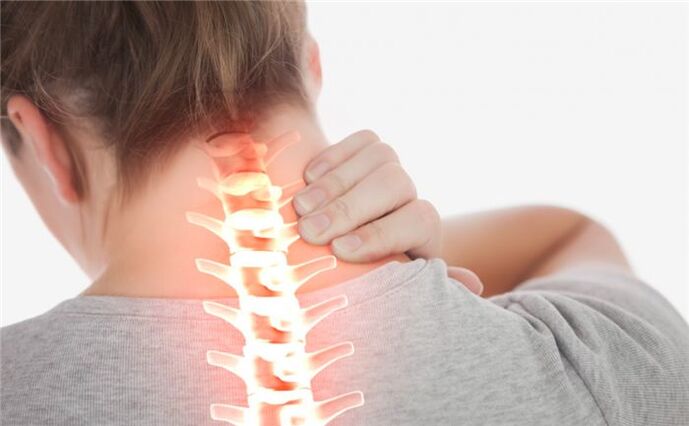
Frequent dizziness, tinnitus, flies in front of the eyes, a feeling of heaviness in the back of the head is not only due to fatigue. Often they are provoked by degenerative-dystrophic changes in the spine. Headache in cervical spondylosis is a typical manifestation of the disease. It is not possible to get rid of them for a long time without affecting the root cause.
Mechanism of disease development
Degeneration of disc cartilage and bone tissue in the cervical spine causes clinical symptoms to be present in the early stages. The growth and displacement of vertebral fragments inevitably leads to impaired blood flow, activation and malnutrition of brain structures.
The causes of cervical spine deformity are:
- congenital disorders of the structure of bone tissue;
- osteonecrosis of the lumbar or thoracic region.
In almost half of cases, pathology is found in people of middle and young age, more often in women. Its development was facilitated by incorrect head posture for long periods of time while sleeping, sitting at a desk, talking on the phone and moving in traffic. The progression of osteonecrosis is further accelerated by the habit of sleeping on high pillows. The mobility of this part of the body, the smaller size of the vertebrae compared to others, the location of a large number of large vessels and nerve trunks, are the causes of the symptoms. Soon. Pain syndrome is key.
Fragments of the disc deflate and the vertebrae are altered compressing the vertebral artery and its surrounding nerve plexus. Prolonged compression causes narrowing of the lumen, slowing blood flow and reducing oxygen supply to tissues. Malnutrition, hypoxia, and cerebral ischemia are then exacerbated by compression of the nerve trunks by osteoblasts - the osteogenic patient.
Symptoms of cervical osteonecrosis
In most cases, headaches and other symptoms of pathology are of a secondary nature or of vertebral origin - they are caused by pathological processes not in the brain, but in the spinevicinity.
Reflex headache - boring pain. Occurs when the first three vertebrae are affected. It begins in the upper part of the neck, spreads to the occipital and parietal parts, and then covers the temples and forehead. It is often more unilateral, like a classic migraine. It lasts from half an hour to several days, aggravated by tilting or turning, and vigorous physical activity.
If osteonecrosis affects the fourth and fifth vertebrae, cervicitis develops. Its danger lies in its resemblance to a heart attack. Pain on one side, sharp, burning, covering the neck, shoulder and below the shoulder blade, hypogastric region, sometimes in the forearm, hand.
Myofascial dysfunction causes so-called cervicogenic migraines. Sharp or pressing pain from the side of the neck that radiates along one side, covering part of the back of the head, the crown of the head, the temples, and to the roof of the eyelids.
In severe cases, other symptoms are observed: photophobia, red eyes, nausea, asthenia.
Cervical osteosarcoma can cause a variety of vegetative-muscular dystonias:
- with frequent headaches;
- violation of thermoregulation, intracranial pressure, respiration;
- sudden mood changes.
With significant compression of the spinal nerves, speech disorders, numbness of the tongue, loss of sensitivity of the fingers occur. A person becomes like a person drunk or under the influence of psychotropic drugs: he pronounces words indistinctly, does not react immediately when told to himself. In severe cases, tissue malnutrition and impaired blood supply lead to persistently elevated intracranial pressure, impaired vision and hearing.
Some information about this disease:
- Cervical osteosarcoma occurs in men and women equally frequently.
- Usually, people between the ages of 30 and 60 get the disease.
- As a rule, pathology occurs in workers who have to be constantly in the same position and perform monotonous movements.
- The cervical spine has a number of structural features, so the disease can have many different manifestations.
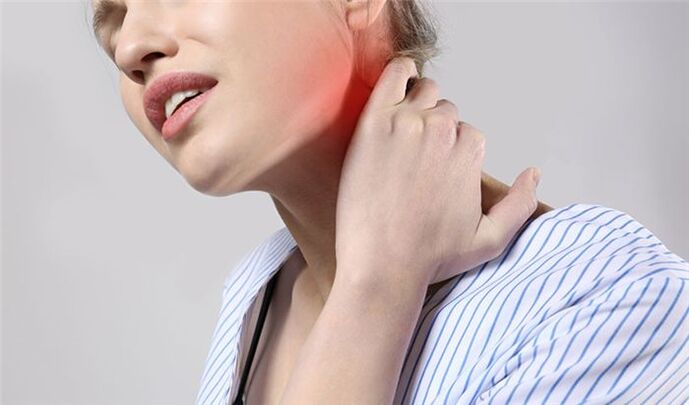
What features of the cervical spine cause symptoms of osteonecrosis?
- There are openings in the lateral course of the vertebrae - the carotid arteries pass through them to the right and left, supplying blood to the brain.
- In the cervical region passes the initial part of the spinal cord - it contains fibers that conduct nerve impulses to all parts of the body, providing movement, sensitivity. If there is compression of the spinal cord in the neck, neurological disorders occur throughout the body.
- This part of the spine has great mobility, and this leads to the appearance of osteonecrosis (although, in most cases, the disease develops in the lumbar region - it is not only mobilityhigh dynamics but also bear the largest load).
- In the neck, nerve roots emerge from the intervertebral discs, forming the cervical and brachial plexuses. They are responsible for movements in the muscles of the neck, arms, shoulders, skin sensitivity, and regulation of autonomic functions.
- The first vertebra doesn't have a large front part - the body - it's a ring of bone over the teeth - a bony part that grows on the second vertebra. This allows the head to turn to the side.
Neck pain, headaches, feeling weak, and numbness in your hands are all symptoms that should prompt you to see a neurologist. Being examined by a specialist doctor and using modern equipment will help to understand the cause of the disease and have the most effective treatment.
Stages and symptoms of cervical osteonecrosis
The first target of this disease is the discs. Each disc consists of a pulp nucleus enclosed in a dense annular. The nucleus acts as a shock absorber when the load is applied to the spine, and the annulus holds the spinal cord in the spine.
Under conditions of poor blood circulation and nutrition, the tissues of the disc begin to break down. The loop becomes loose, and the core loses some of its moisture, becomes thinner, and loses some of its shock-absorbing properties. As a result of such changes, the load-carrying capacity of the disc is reduced and it is damaged.
One of the main symptoms of cervical spondylosis is pain in the neck that is shooting, burning, stabbing, similar to "electrical discharge". It usually extends to one or both hands.
Some patients complain of pain or constant pain, and in addition to pain, stiff movements, dizziness, headache, and memory impairment.

In many ways, the nature and severity of the pain, as well as the accompanying symptoms, depend on the stage of osteonecrosis:
- 1 stage.Changes happen inside the disc - the nucleus pulposus moves and begins to stimulate nerve endings. But the pain in the early stages usually only occurs with exertion, movement, coughing and sneezing, when resting the patient may not feel any discomfort.
- 2 stages.The annulus loses its ability to hold the nucleus pulposus, the distance between the vertebrae decreases, and they shift relative to each other. As a result of such changes, nerve endings can be compressed, causing severe pain. Pain, in turn, forces a person to take a forced position.
- 3 stages.The annulus is destroyed and a herniated disc occurs. At this stage, the cervical spine is often deformed - reducing its natural curvature. Aneurysms compress or irritate nerve roots, causing severe and constant pain in the neck and arms, often accompanied by numbness and muscle weakness.
- 4 stages.The annulus becomes dense, and adhesions form between the vertebrae. As a result, immobilization occurs in the affected area, while the pain may even subside.
Diagnose
When there are complaints about the poor health of cervical osteochondrosis, you should contact a neurologist. During the examination, the doctor determines the source of the pain. To achieve this, he uses the following methods:
- apply finger pressure to the cervical vertebrae where the nerve roots protrude: an emergent pain response indicates a headache;
- pressing on the points near the protruding bone below the lower edge of the ear: the pain then clearly signals the development of a cervicogenic migraine due to mechanical compression.
For an accurate diagnosis of cervical osteochondrosis, several instrumental studies are prescribed. Radiography, magnetic resonance and computed tomography remain the leading areas. With their help, pathological changes that have occurred in the structure of bones, cartilage and soft tissues will be visualized.
Treatment of cervical osteonecrosis
The drug is formulated to eliminate symptoms, restore normal blood circulation, biomechanics of the entire cervical region.
To relieve pain, NSAIDs, analgesics, muscle relaxants, and antispasmodics are used.
Vasodilators - vasodilators help relieve vegetative manifestations, improve venous outflow and prevent edema in the affected area.
The drug contains B vitamins and magnesium that improve the nutrition of nerve tissue cells and reduce adverse symptoms.
At the same time, patients are recommended drugs to regulate blood pressure, regulate heart rate.
Many patients were given sedatives, antidepressants, and sedatives.
Depending on the severity of the disease, the course of treatment is short or long. Pain relievers are used once or for several days. Means normalization of blood flow and vitamins - courses of 2-3 months.
To maintain the effect of the drug, physiotherapy is prescribed:
- massage the collar area;
- acupuncture and acupressure.
With exacerbations, the wearing of therapeutic bandages that support the cervical muscles is shown.
In the absence of an exacerbation of osteonecrosis, therapeutic exercises help prevent and prevent symptoms of VVD. Exercise helps strengthen the muscles of the neck region, relieves spasms, improves the elasticity of blood vessels and the ligamentous apparatus of the vertebral joints. Training includes soft-tissue stretching movements: deep head tilt, twist, turn.
Patients with osteonecrosis, complicated by VVD, should arrange their sleeping arrangements carefully. You just need to rest on the mattress and orthopedic pillow, do not drink a lot of liquid at night to avoid swelling. Jobs and hobbies related to unfavorable cervical vertebrae should be avoided: leaning back or tilting the head low.
All materials presented on the website are for educational purposes only and are not intended as medical advice, diagnosis or treatment. The website administration, editors and authors of articles are not responsible for any consequences and losses that may arise from using the website's materials.
Dizziness with cervical osteonecrosis
Dizziness when infected with genital warts is a common phenomenon in both sexes, starting from the age of 30 and up. The peculiarities of lifestyle and some abuse lead to the development of cervical spondylosis in adulthood in almost every second population of our country. There are patients with problems already in their teens.
The danger of this pathology cannot be underestimated: it worsens a person's life, contributes to the development of dangerous conditions. The symptoms of which are a variety of unpleasant sensations.
Causes of dizziness in cervical osteonecrosis
In the article, we will consider whether cervical osteosarcoma is dizzy and sick for a long time, why does this happen, what causes the condition to become worse and what to do. , how to get rid of discomfort forever.
Due to an unhealthy lifestyle and often overloading the neck, the condition of the spine in this area is gradually changing.
Degenerative changes develop in the discs, the openings through which the spinal nerves and blood vessels feeding the brain gradually narrow.
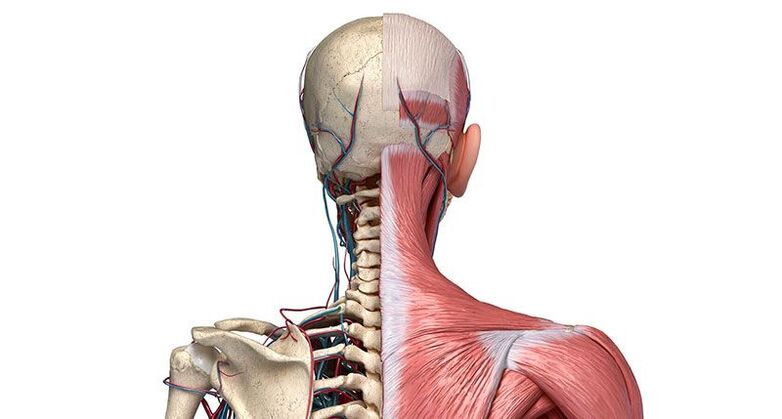
Extremely uncomfortable and dangerous situation. The patient feels pain when moving suddenly, in certain positions of the head and neck. The brain receives less oxygen than it needs, leading to the development of frequent episodes of dizziness.
The main reasons that a person with osteonecrosis may feel dizzy:
- Compression of the vertebral artery by bony growth. Osteophytes compress the vessels that feed the cerebellum and basal parts of the brain. Its permeability decreases, reducing the amount of blood and oxygen passing through it. In medicine, this phenomenon is called vertebral artery syndrome.
- Frank's nerves were stimulated. Nerve fibers of the sympathetic system surround the vertebral artery, sensing any impact on it. In response to stimulation, the nerve causes vasoconstriction, impairing its ability to function. Hernias, bone tumors, or instability of the cervical vertebrae can cause discomfort.
- The process of degeneration of the upper joint of the vertebrae below or the formation of a herniated disc in the neck region.
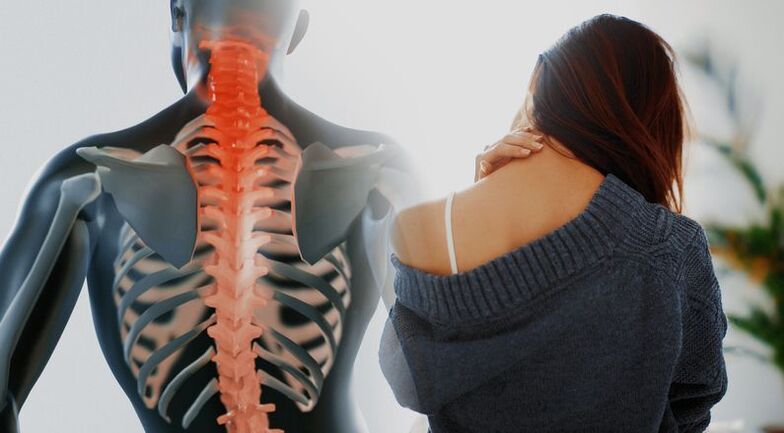
With dizziness, nausea due to cervical spondylosis as well as manifestations of other symptoms such as body weakness in women, drug treatment is necessary, but what drugs to take, which drugs to take? Only the doctor can decide later. Carefully study the patient's condition. After all, the causes of dizziness are varied.
Depending on the specific cause of the development of the pathological condition and negative symptoms, different means and techniques are used.
You need to understand that dizziness, if the attacks are severe and frequent, are a really dangerous condition. A person not only puts his life at risk when driving or crossing the road, but also at risk of developing encephalopathy due to lack of blood and regular nutrition to nerve cells.
Additional symptoms
Before deciding what will help with the appearance of dizziness in cervical spondylosis, what exercises will stop the unpleasant attacks, you should not read the reviews of strangers, but evaluate the symptomsaccompanying disease progression.
An experienced doctor, according to such signs, suggests the degree of development of scleroderma. It is also capable of assessing the severity of the condition, compiling a diagnostic algorithm. And then - to choose an effective and safe treatment.
Symptoms that are accompanied by a decrease in the flow of the cervical artery and signal the urgent need to consult a doctor:
- Intermittent tinnitus, possibly changing heart rate. Then gradually spread to the entire head. As a rule, an attack occurs after being in an uncomfortable position, exerting yourself or in a state of severe fatigue.
- Cracking, pain when moving the neck.
- Darkening of the eyes, brief fainting when tilting the head back. In advanced cases, even a sharp bend induces such a reaction.
- Nausea, vomiting, accompanied by episodes of dizziness.
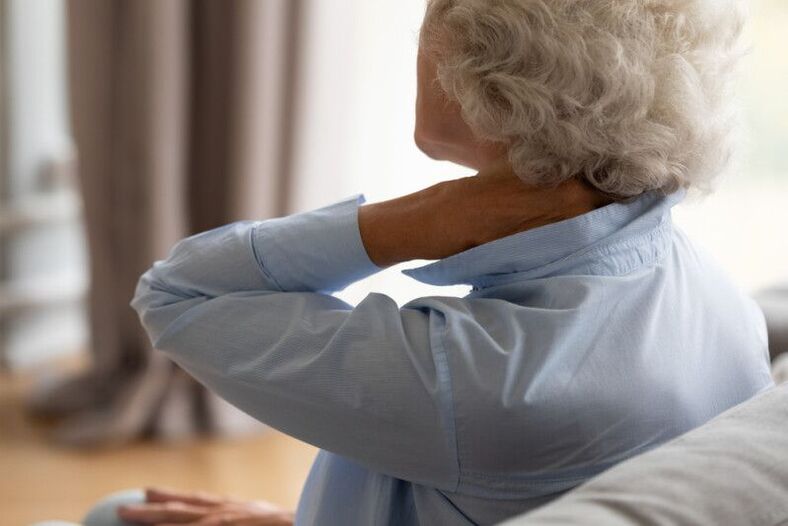
Rotating head can not be caused by fibroids, why it develops and what to do, only a neurologist can tell you after examination. The earlier the diagnosis and treatment, the more effective the measures taken.
If you seek help early, you have a better chance of avoiding drug treatment and getting rid of the problem that has arisen. Delaying the trip to the doctor, risks provoking the development of a more dangerous condition.
Diagnose
How to treat cervical spondylosis with dizziness, what to do if a violation of coordination of movements has developed and what is indicated in such cases, you can find out after havingfully diagnosed, as each case is unique.
Before deciding on a treatment regimen, it is extremely important for the doctor to find out what influences the development of the disease. It is necessary to clarify how quickly it deteriorates and what are its features. Due to these features, when dealing with frequent complaints of dizziness, a thorough diagnosis is made.
A neurologist conducts an initial examination in which:
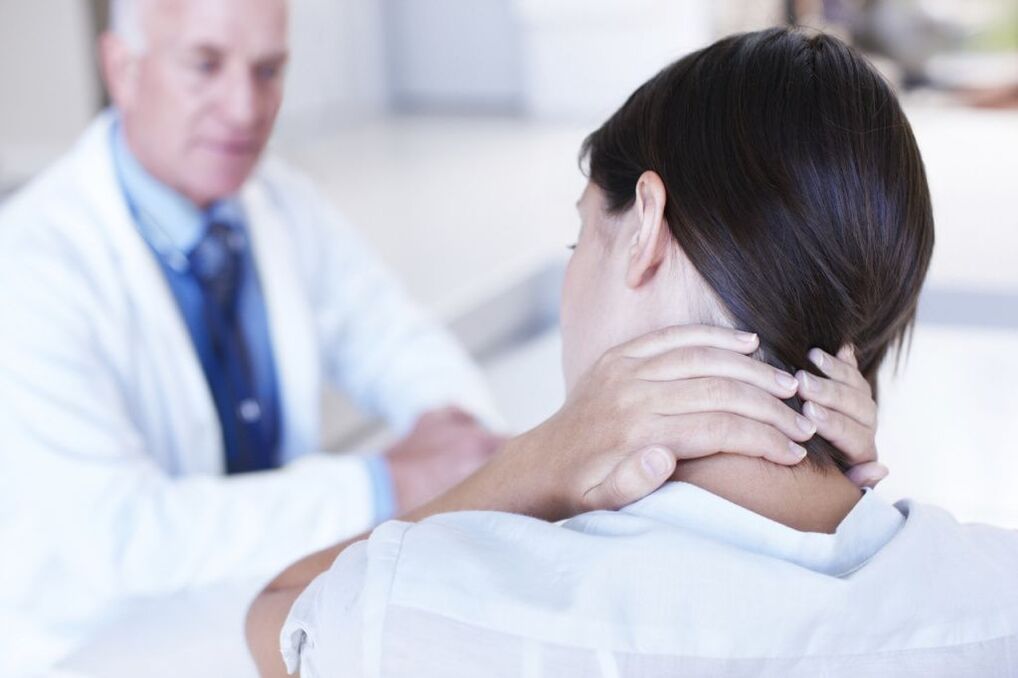
- determine the range of symptoms accompanying the course of the disease;
- According to the results of physical examination, changes in the cervical region are detected;
- collect medical history, history of disease development;
- Ask about the patient's life characteristics to identify risk factors influencing the development of the disease.
After that, instrumental exams will be scheduled:
- MRI of the brain and neck to determine if the changes are already present and how far they have spread;
- Ultrasound of the vessels passing through the neck will show how the circulation of blood and nutrients to the brain is impaired;
- CT of the cervical spine shows established deviations from normal bone structure;
- electromyography will allow you to register the electrical activity of the muscles of the area being evaluated;
The correct answer to the question of what to do if your head spins from your neck and hurts is to see a doctor. The clinic will determine the exact cause of the poor condition and select the appropriate therapy.
The treatment
After determining the specific stage of the disease, the doctor will prescribe individual therapy. After all, you may experience something like occipital neuralgia, and you need to treat it your way.
Preference is given to complex treatment, including:
- taking drugs (chondroprotectors, anti-inflammatory drugs, etc. );
- physical therapy techniques;
- different massage techniques;
- specialized combination of physical therapy exercises, occupational therapy;
- follow a healthy diet.
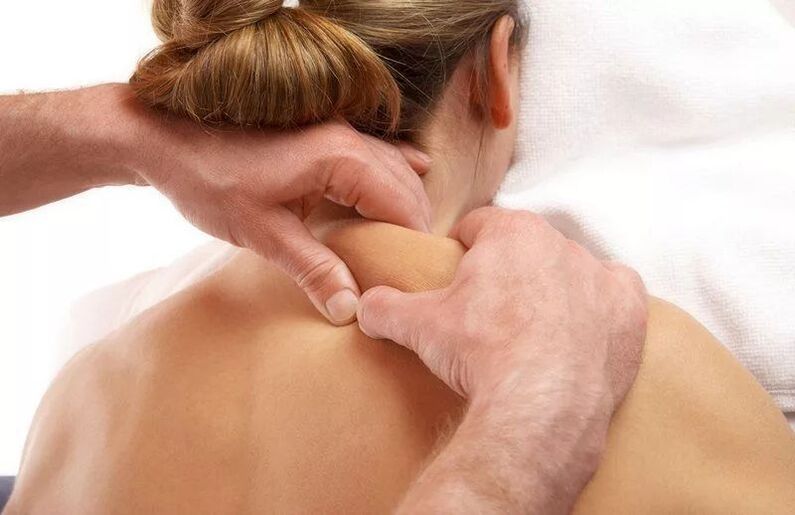
When you feel dizzy with cervical bone necrosis, it is possible to treat it with both conservative methods and surgical intervention.
Operations are performed in situations where the spine is too narrow or where persistent masses of hernia have formed.
Effective treatment in the early stages is massage and special exercises. Observance of the doctor's recommendations at the preclinical stage of the disease can be completely cured.
The results show that physiotherapeutic methods allow to eliminate painful symptoms in a few sessions:
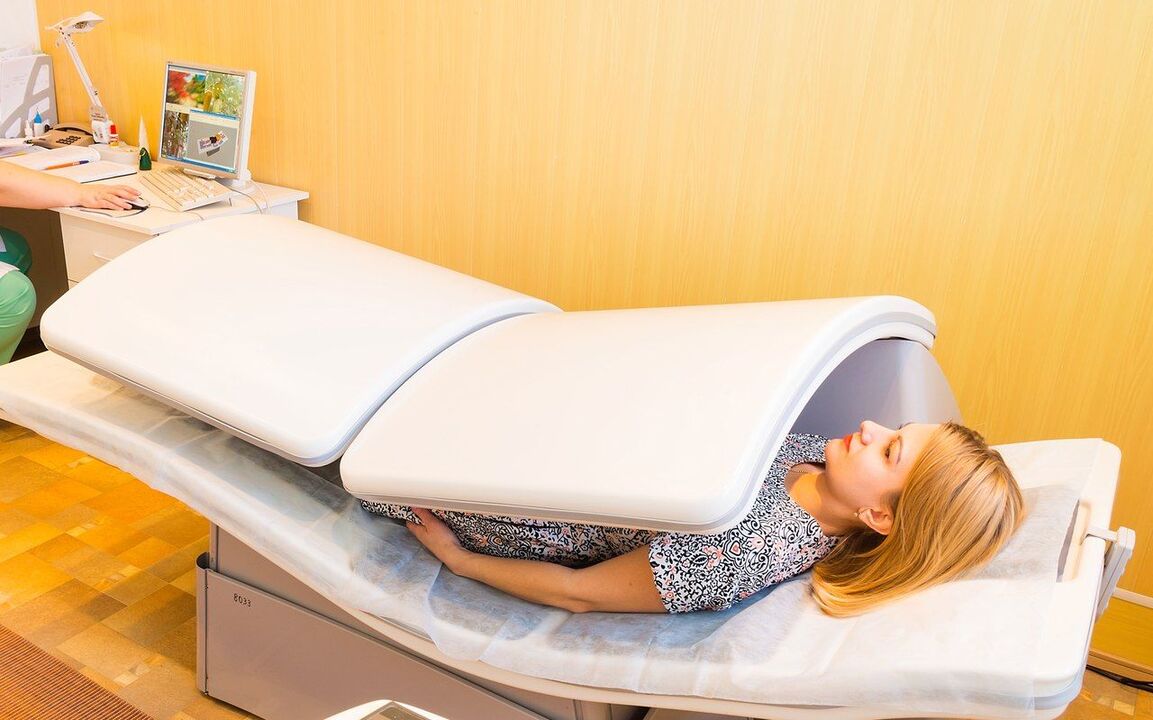
- classical manual therapy;
- methods of shock waves affecting the body;
- hydro acupuncture;
- laser therapy.
Treatment of cervical spondylosis, when the head is already frequently dizzy, is an urgent and necessary step.
This dangerous symptom is a foreshadowing of the development of really dangerous pathologies, which can worsen the comfort of human life. And even shorten its duration.
Prevent
It is possible to prevent the appearance of unpleasant symptoms or significantly reduce their severity with the help of regular preventive actions. Many people think that the use of money that does not cause dizziness due to cervical spondylosis is effective, how to get rid of and reduce pain faster than treating the disease at home?
Prevention by lifestyle
We list the appropriate measures to prevent the progression of the disease:
- Reduce the time in the bent position. For example, sitting in front of a computer, device, or work that requires a neck stretch and a forward tilt of the head. Provide a convenient workplace.
- Organize a reasonable rest and work schedule.
- Reject destructive habits and addictions. Reducing alcohol consumption and the number of cigarettes smoked is imperative.
- Set up a place to sleep. Purchase an orthopedic pillow and mattress that takes into account the structural features of your spine.
- Increase the time of physical activity in the daily schedule, avoid being inactive.
- Regularly perform special warm-ups during the workday. Ideally, you should set aside 5 minutes every hour to exercise.
- Avoid traumatic activities, excessive sports and overexertion.
- Monitor your body weight. When obesity appears, try to lose excess weight as soon as possible.
- Regularly participate in specialized massage courses, learn safe self-massage techniques.
- Use a comfortable backpack to store things, avoid the bag causing a jolt when traveling. Use a head restraint when moving while sitting.
- In case of injury, seek help immediately. Start following medical recommendations from day one.
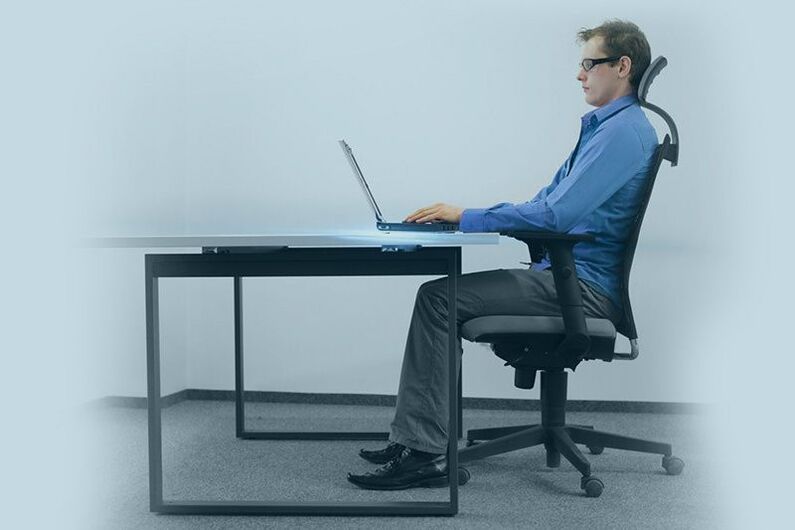

Situations when relying on preventive measures, neck and back of the head can not be ignored. This is the first symptom of the disease and requires treatment.
Power protection
It is beneficial to follow a special diet that will aid in the medical recovery of the neck and cervical spine.
The main principles of nutrition when there is a problem or its tendency:
- the use of gel-forming foods in food, which contributes to the restoration of cartilage in the body;
- maintain a balance between protein and carbohydrate foods, a sufficient amount of lean meat and fish in the diet;
- limit eating too much salt and spices;
- reduce consumption of salted, smoked products;
- reduce dietary sweets, include rich products;
- limit beverages containing caffeine;
- increase the proportion of fresh vegetables and fruits in the daily menu;
- refuse fatty and fried food, fast food.
An important place in the life of a person with a similar disease should be occupied by exercise therapy. They are especially suitable for people who are elderly or have a sedentary lifestyle. At the same time, a special set of exercises must be repeated daily to achieve the desired results.
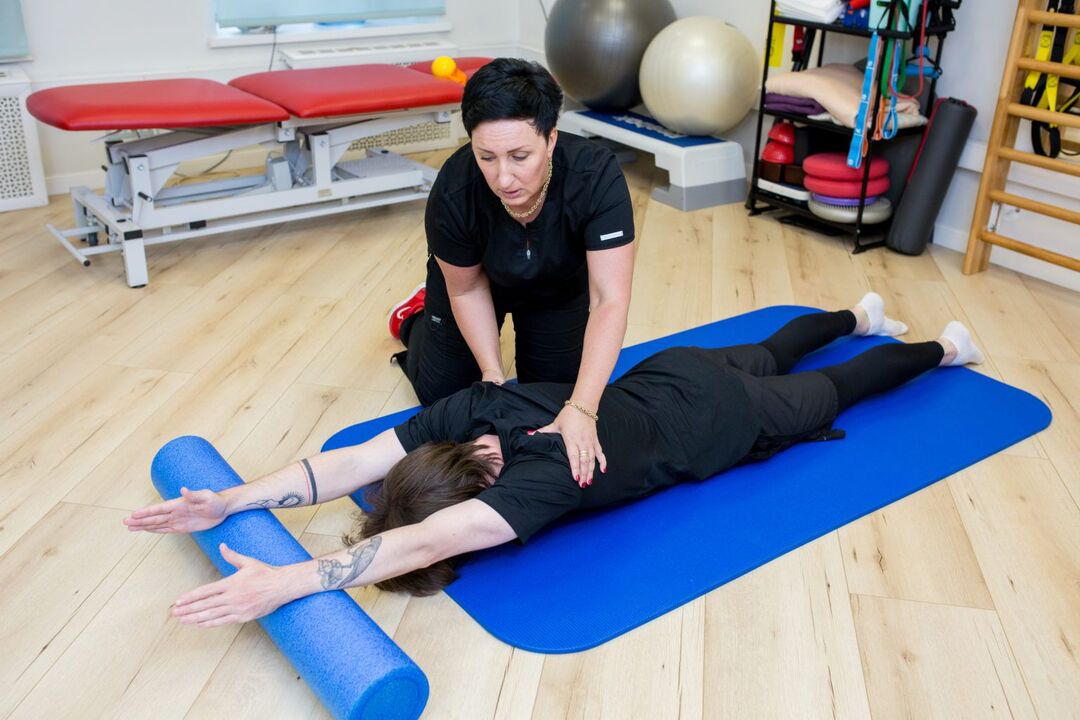
Although there are many types of oriental medicine, with cervical spondylosis vertigo what to do, what to drink, how to deal with attacks, how to cure deviation or eliminate a particular symptom, whether this or that remedy is really helpful and does it work. cause additional harm, should be decided by a professional physician. An online consultation with a neurologist can help here.
Do not blindly follow the advice of friends and try to get rid of the disease without enlisting the recommendations of a qualified doctor.
In severe cases, osteonecrosis can not only reduce quality of life but also deprive a person of the ability to work. Therefore, try to promptly notice the factors that can lead to the destruction of the discs, and if possible, eliminate or reduce their harm to the spine. If you are concerned about neck pain, consult your doctor. Only a specialist can determine the stage of the disease, select pain relievers, and prescribe a course of physical therapy or physiotherapy.



























